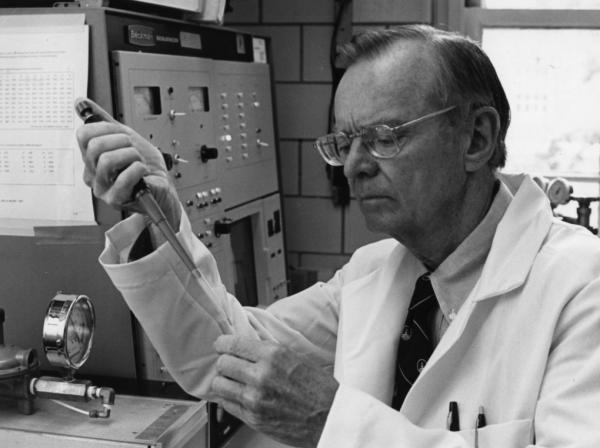Tough Decisions in Biomedical Research: Focusing Limited Resources
In 1988, Dr. Richard Krause was interviewed by the NIH History Office about his experiences at the NIH as NIAID Director from 1975-1984, a time when the AIDS epidemic was just beginning to be recognized. Below is an excerpt from the transcript, in which Dr. Krause illustrates why getting funding for infectious disease research in the 1970-80s was difficult:
"Another episode sensitized me to the political reaction to commitment of resources to the treatment of less common illnesses. An NIAID achievement, when I came on board, was the use of pure bee and wasp venom for desensitizing patients who were at risk of fatal anaphylaxis after a sting. This was a major advance, because before that time, desensitization was not very successful.
[Dr.Lawrence M.] Lichtenstein at Johns Hopkins [University] developed a desensitization method using pure venom. It worked beautifully. Sensitive people can die from bee or wasp stings, particularly people who work outdoors, surveyors, engineers, telephone linemen ...farmers. Once you have successfully desensitized the person who is in danger of fatal anaphylaxis, no reaction occurs when such people are deliberately stung by a wasp in the clinical laboratory. So that was very impressive.

Dr. Krause working in his NIAID lab in 1982.
The point is this. When we go before the appropriations committees of Congress, we must describe achievements of the previous year. [A senator] asked about new advances … So I explained what we had done about bee stings. I could see that [he] was not impressed. I could see it in his face. He asked, 'Dr. Krause, how many people die each year of bee and wasp stings?' I said perhaps fifty, perhaps 100. He replied that that was of course unfortunate, but I could see he did not consider this a major health issue. For all I know it could be 500 or 1,000 people. Certainly it is not a large number. On the other hand, there are many, many thousands of people who live in fear of death, because they know what a severe reaction they can have, and they are appreciative of this medical advance.
Nevertheless, that episode sensitized me to being evenhanded in the use of scarce resources for a smaller number of patients. Of course, they are important. But there were many problems, many demands from 1975 to 1985, and the NIAID was stretched very, very thin. ... Too many scientists thought infections were no longer important and that view was translated into a decision in NIAID's budget.
“When I took over as director of NIAID, Dr. Lewis Thomas said…’Now that we’ve conquered infectious diseases and we don’t have to worry about them any longer, we’ll worry about heart disease and cancer and so forth.’ Lew Thomas has since taken that back….That was the picture when AIDS occurred.”
Dr. Krause passed away Tuesday, Jan. 6, 2015 in Washington, D.C. He was 90 years old. Read his oral history http://history.nih.gov/archives/downloads/Krause88.pdf to learn more about his experiences with AIDS, swine flu, STDs, and the politics of funding biomedical research.
Related Blog Posts
This page was last updated on Monday, January 29, 2024
